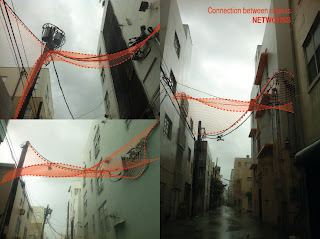Thursday, August 30, 2012
Michael Bermudez
Architecture
and Sound
"Architecture
is defined by the actions it witnesses as much as by the enclosure of its
walls."
- Bernard Tschumi
The above
quote from Bernard Tschumi, to me, explains what architecture can become. It is
not about a stringent set of rules devised by those who took part in the design
and construction process placed upon to inhabitants of the structure.
Architecture can, and should, become more than that. It is about letting people
take part in what happens in the building you’ve designed. It’s about letting
your design take on a life of its own. You set a goal to create something that encompasses
a certain set of programmatic and aesthetic qualities you think will make your
building a success. However, there comes a point when you have to let the
inhabitants take over. They see what you’ve done not for the theory behind it,
but as selfishly as possible. They find the nooks where they can be by
themselves. They find the spaces where they can have group meetings. They find
the openness to hold events. It is the job of the architect to provide these
conditions as best he can, but ultimately the user will change the program as
they see fit. When that happens, your design has taken a life of its own.
Visiting the site, a certain programmatic scheme becomes apparent – both visually and auditory. Walking the site through at night, it becomes very apparent. When in the deepest part of the alley, the lighting becomes mustard and the sound becomes mechanical. As you move towards others programs, the lighting becomes lighter and more colorful with sound being varied with events taking place. There is a juxtaposition between a dark and dirty alley to a bright and pristine public program.
When
researching how I can make my design have a life of its own even though it
already a built environment, I came across Marcel Duchamp. He plays with an
idea in art called “readymades.” The only known definition given by Duchamp
about readymades (which is debated not to be his definition at all, but by
Andre Breton who wrote this definition for the Surrealist dictionary) is “an
ordinary object elevated to the dignity of a work of art by the mere choice of
an artist.” Expanding on this idea to with the alley, I came across an esoteric
musical score called “Treatise” by Cornelius Cardew. Then I adjusted it to suit
my purposes. Cardew never explicitly mentions how one should perform his work,
but encourages the interpreters to devise their own rules about the piece. The score is now my diagrams. This score show
me something new when placed over the site. When using cognitive psychology, the
score encompasses a certain set of rules within itself that allows someone to
organize it – Gestalt Principles of Organization. This organization technique allows
the interpreter to organize based on proximity, similarity, continuation, and
closure. Mimicking Treatise with the Gestalt Principles of Organization, I can
organize the alley and elevate it beyond a mere road for service. I can find
those events that are already occurring in the space and organize them to
accentuate or downplay them. It brings composition to these 15 blocks disorder.
I have come
to the realization that sound and architecture are very similar, when you look
at it through a certain point of view. The composer writes his vision for
someone else to play it. The architect draws his ideas down for someone else to
build them. The musician spends time crafting his piece in order for someone
else to enjoy. The architect spends time designing his work in order for
someone else to use it. I want to combine these two professions into one
cohesive piece. The musical score is the floor plan to the way a piece should
be experienced. When the visitor of my work comes, I want them to break their
preconceived notions. I see my design a musical score. I want to create a space
that becomes unique by changing experience at certain points by manipulating
perception.
Subscribe to:
Posts (Atom)






















.jpg)
.jpg)
.jpg)







































